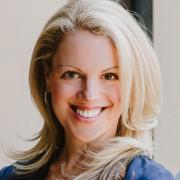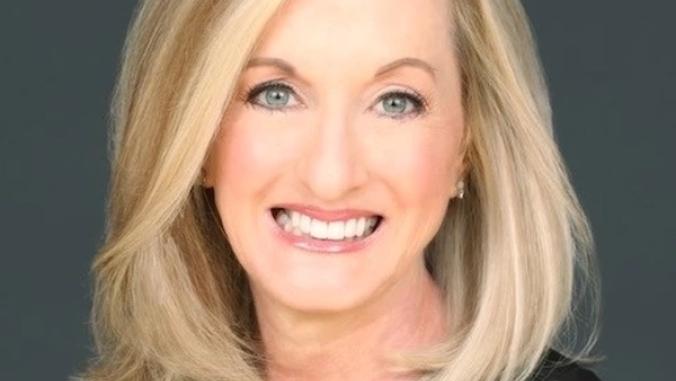Maddy Kulkarni, marketing professor and global marketing director, sustainability and social impact at PepsiCo, is the author of a new book, "Social Impact Marketing." It’s required reading for students in her course as an adjunct professor with SMU’s Cox School of Business — and it should be for any practitioner looking to increase adoption of sustainable products and solutions.
The culmination of more than a decade of on-the-job training with one of the world’s leading consumer brands plus extensive research into many others, "Social Impact Marketing" equips readers across industries with leading methodologies, tools and lessons learned, going back to the author’s first high-profile sustainable packaging project: the 100 percent compostable (and notorious) bag for Frito-Lay.
I spoke with Kulkarni about what PepsiCo learned from the SunChips launch, the need to test campaigns and how to best measure impact.
Anna Clark: Let’s dive in with SunChips and its compostable bag. I still have the sample I got at the 2010 Green Business conference in Washington, D.C., stored in my filing cabinet. So I’m a fan, but many weren’t, given the negative press surrounding its debut. What comes up for you when you reflect on that?
Maddy Kulkarni: The SunChips compostable film was a great solution, but it didn't fit what the consumer could handle. The short version is we all were in love with the idea of the bag being compostable, but any time you picked it up, it was extremely noisy. I don’t shy away from this in my book. In fact, how we went about redesigning it and relaunching a much quieter bag is a great case study demonstrating how marketers can solve problems in a way that is both sustainable and socially desirable.
Clark: That’s what I appreciate about your book: battle-tested advice broken down into a handy reference that marketers can execute on right away.
Kulkarni: Thank you! And yes, the intent was to create something actionable, colorful and hopefully interesting to read. Since the book is designed for students, the first few chapters cover the thinking, frameworks and strategies for social impact marketing. You will see an example from a nonprofit and an example from a corporate, and then there's space for you to do exercises yourself. The next few chapters cover execution, from visual identity, social media and PR to measuring results.
It’s critical that we measure the effectiveness of sustainability campaigns to make sure we're going far enough. I'm seeing a lot of brands bring awareness to issues, but I think our brands can go further and drive systems change.
If it's not simple, it's intimidating, and no longer can sustainability be academic if we want people to engage.
Clark: I’m glad to see you continuing to push the envelope. The cynic in me is concerned that a consumer products company might hire the best brains in sustainability to greenwash. What do you say to that?
Kulkarni: I'm so aware of the potential for greenwashing and purpose-washing that I'm constantly working to ensure that we’re not doing that. Fortunately, there are ways to prevent it. At PepsiCo, our legal team knows the FTC’s Green Guides in the U.S. and those put out by governments around the world. And our partnership with the World Federation of Advertisers gives us access to resources to help marketers use environmentally friendly words only when they meet certain standards.
To prevent greenwashing or purpose-washing, I also recommend testing campaigns before launching them, because there are things that we can get wrong and sensitivities we might miss, especially around topics like diversity, equity and inclusion. The intent behind testing is to learn upfront from potential missteps and do better.
One tool we helped create through [media company] Sustainable Brands is ASAP, the Ad Sustainability Awareness Platform. It provides qualitative responses from consumers, and a quantitative score on how well that campaign drives influence, credibility, actionability and talkability so that our sustainability campaigns are as compelling as our conventional ones and actually drive behavior change.
Clark: Much of what makes your book so digestible comes down to language. What role does word choice play in sustainability communication?
Kulkarni: I wanted to ground this book in real experience using brands that people use every day — and the same goes for language. If it's not simple, it's intimidating, and no longer can sustainability be academic if we want people to engage.
It's really important to test marketing ideas and messages against the research to ensure that they are rooted in science. Going back to the compostable chips bag, I sat with our R&D team day after day trying to understand the science in order to create "human speak" around it. As the scientists talked, I translated. Going back and forth, we created a language (like "plant-based material" and "energy savings equal to running 1 LED lightbulb for 1 hour") to bring these concepts to life for consumers.
Of course, the language also has to be succinct enough to fit on a small package. The Pepsi bottle and the packet of single-serve Lays potato chips only provide so much space to communicate. So we have to make these complex topics like carbon emissions and carbon footprints and regenerative agriculture connect with consumers using language that is crisp and simple.
Clark: Any final words of advice for practitioners who want to better understand social impact marketing?
Kulkarni: In the book I challenge people to think not as competitors but as collaborators. In that sense, I’ve taken traditional marketing frameworks and elevated them by adding a social impact lens. For example, in my book I include a pyramid of how to evaluate different marketing campaign goals. At the bottom of the pyramid are awareness goals. This is traditionally how we would measure effectiveness of campaigns, such as how many impressions were delivered and how many eyeballs saw our campaign. The second tier on the pyramid is the engagement goals, including KPIs around how many people engaged with your campaign, how many people shared your story, signed your petition, showed up to your concert, and so on. Then at the top, where I'm hoping brands will aim, is positive impact. How many female farmers now earn living wages because of the female farmer campaign we ran or how much less plastic do we have in the ocean because our brands invested in recycling infrastructure? That’s how marketers create impact.
Clark: What are the most important things to come across in this article about your book?
Kulkarni: That this book is intended for any professional who is looking to make a social impact. Whether you work for a corporation or a nonprofit, this could be a resource for how to think through taking your traditional marketing frameworks and add a social impact twist to it. For example, as marketers, we've all learned the four P’s, and so I've added in a fifth P to talk about, Partnerships, because we know that no one company can do this work by themselves. Corporations need the on-the-ground knowledge that nonprofits have, and nonprofits need the resources that corporations have in order to scale.
Clark: It sounds like if we just did what you are advising in this book to whatever extent possible, we could all get a lot further with making the world more sustainable.
Kulkarni: That would be my dream. Hopefully I've made marketing social impact products and services easy and approachable. I’ve intentionally used simple language and a conversational tone to make this a fun read. And I have to credit a lot of my sustainability marketing education and network through Sustainable Brands and GreenBiz. People I met at these conferences from Nestle, Procter & Gamble, Target and every brand featured in my book were more than willing to share case studies from the campaigns they created. No one charged for image rights, they wanted the information to be accessible. In this spirit of collaboration, I’m hoping we marketers can be on a learning journey together to inspire consumer engagement around social impact.






